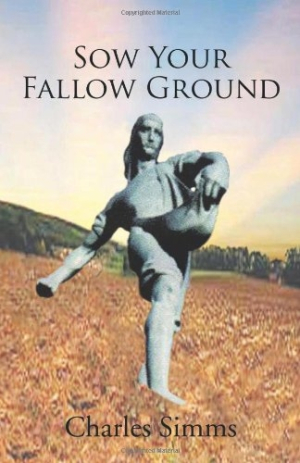Sow Your Fallow Ground
Charles Simms understands that attempting to persuade people to accept new concepts can be difficult, so he invites his readers to approach his ideas with a willingness to be tutored. With that established, he explains his theory about how the science of human action (praxeology) combines with economics and biblical principles to form a roadmap to peace and prosperity.
Simms begins with a basic explanation of praxeology, noting that it evolved out of research in economics, and is derived from a Latin or Greek word meaning established practice or custom. The result is the premise that human action is about the cause and effect of human choices, which aligns with biblical teachings.
Simms then discusses a variety of “laws of human action,” such as the Law of Imagination, the Law of Association, and the Law of Marginal Utility. To support these ideas, he uses contemporary examples, cites relevant passages from scholarly books and credible research sources, and sprinkles in biblical references when needed.
Simms concludes by explaining his process of learning, delving into various contrasts between learning about people and learning about things. Understanding this process is particularly important for readers who may want to share Simms’ concepts with others. He also proposes a project called “Seeds of Choice” for Christians to “teach the interconnection of subjective economic responsibility, inevitable human action, and scriptural reality.”
The main flaw with Sow Your Fallow Ground is that it is extremely difficult to grasp Simms’ overall theme or premise. Simms claims his objective is to prove that human-action science, economics, and the Bible are a single subject. But later he states that his book “is about communication in light of the science of human action or what makes an ‘unbridgeable gulf’ between humankind and all lesser life forms.” Even Simms seems uncertain of his goal. His disjointed chapters convey no logical progression of thought as he jumps from politics to types of imagination to how the Ten Commandments are ignored. Numerous grammatical and punctuation errors also detract from the book’s flow.
Simms admits that he does not know of any schools where the science of human action is taught, other than possibly as a subtopic at a few colleges. Most telling of all is a question Simms presents: “So how does an ordinary tool designer qualify to write about a theoretical new science? Well, if we look up some unusual words and add some scattered history, it’s not all that difficult and could be an elective high school course.” In the end, most readers will come to understand that it takes more than some unusual words and some scattered history to write a credible and interesting book about such serious matters.
Reviewed by
Jeff Friend
Disclosure: This article is not an endorsement, but a review. The publisher of this book provided free copies of the book and paid a small fee to have their book reviewed by a professional reviewer. Foreword Reviews and Clarion Reviews make no guarantee that the publisher will receive a positive review. Foreword Magazine, Inc. is disclosing this in accordance with the Federal Trade Commission’s 16 CFR, Part 255.

